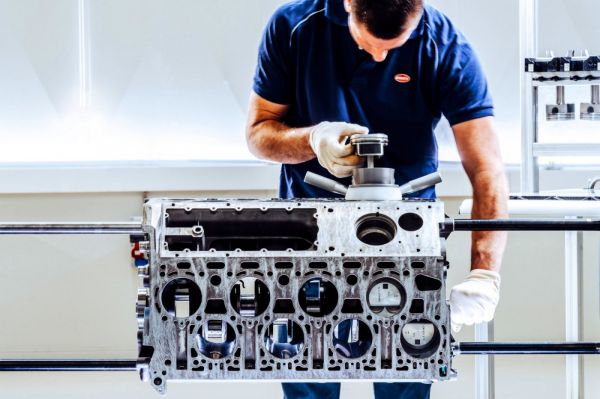BUGATTI

W16: the extreme of the Volkswagen group's automotive engineering
In 1997, Ferdinand Karl Piëch, chairman of the Volkswagen group's board of directors, outlined a plan for an 18-cylinder engine on the back of an envelope to Karl-Heinz Neumann, the group's head of engine development, while they were traveling in a express train from Tokyo to Osaka. This eventually gave rise to the 8.0-liter 4-turbo W16 that powered Bugatti cars in the VW era.
The aim was to build a 400 kg power unit, no bigger than the V12 engines, which the engineers achieved by building 2 W8 biturbo blocks at a 90° angle to each other. It was a particular challenge that, for example, there were not enough engine banks for the test run, so it had to be developed and built first. For the first time in 2001, the first block assembled by hand from more than 3,500 parts was released, which immediately knew the desired 1,001 horsepower. Then came the problems that took years to solve, for example, due to the draining of hot exhaust gases, an exhaust system made entirely of titanium was used here for the first time. The cooling system is also rarefied, a total of 40 liters of coolant circulates in both circuits, 15 liters of liquid in the low temperature ensure the reduction of the temperature of the intake air.
A completely new engine has been created for the Chiron, precisely all components have been optimized, thanks to which its performance has increased to 1,500 horsepower, for example, they now use sequential turbos, the largest of which are 69% larger than the Veyron received what year. This version already uses a special exhaust gas recirculation system, which also works at a temperature of 980°C. At Volkswagen's Salzgitter factory, 2 workers assemble the Bugatti W16 engines in 6 days from 3,712 individual parts, which are delivered ready-made to Molsheim, where they are assembled with the transmission and installed in the cars.
Mundoquatrorodas

Nenhum comentário:
Postar um comentário